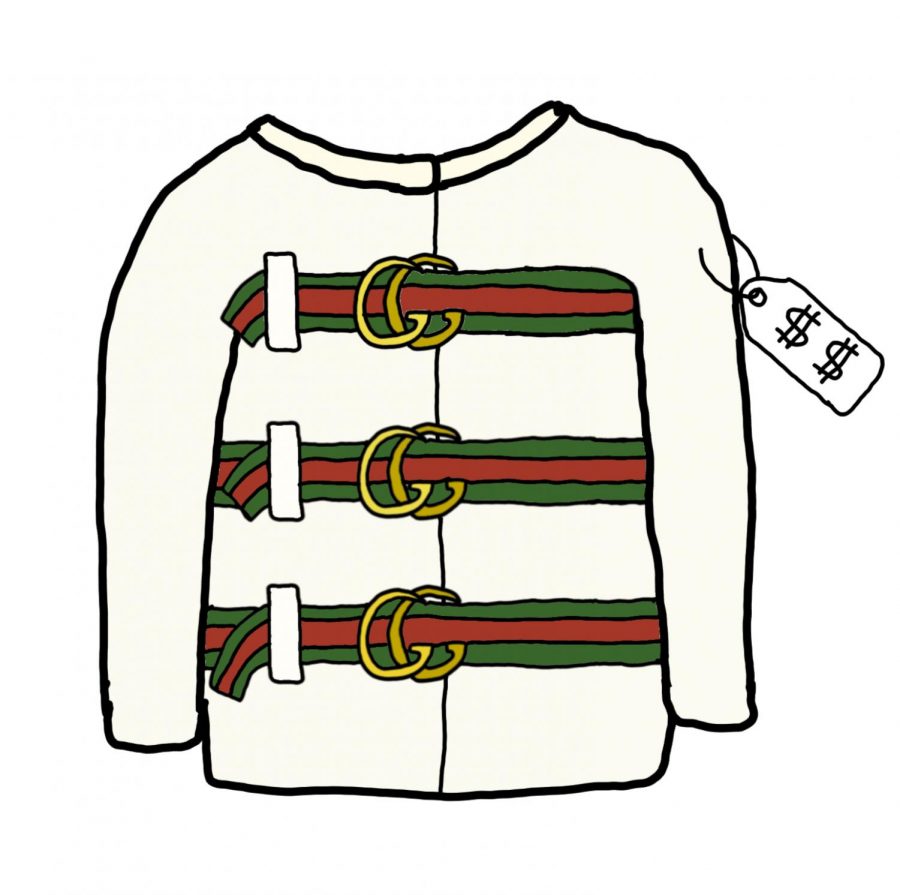Can mental health be used as fashion inspiration?
October 25, 2019
During the recent Milan Fashion Week, not only did beige capes, miniature handbags and retro colors catch the eyes of observant audience members, but so did some pieces from Gucci’s spring collection. Amidst fashion week, Gucci has found itself centered yet again in another controversial scandal as the high brand is being accused of using mental health as a basis for new designs this season.
As watchful critics, designers, celebrities, and agents sat front-row with a sense of excitement and creativity spreading throughout the room, they had little idea that a controversial show was about to unravel. Gucci has been in hot water in the past for things such as creating a sweater with a close resemblance to “blackface;” this time, however, it is for allegedly using mental health as inspiration for the jackets seen on the runway. The models were seen coming out on a conveyor belt with a bland white backdrop and set style. Many of the looks took on a simplistic design, utilizing shades of ivory, with a strong resemblance to straitjackets – which are usually found in hospitals, asylums and psychiatric facilities, and often used on those with mental diseases. Straitjackets are usually used to restrain people and keep them from hurting themselves or others by binding their arms. In one instance, a model wore a garment that closely resembles the straitjacket, both in color and structure, along with buckles and straps. “It is in bad taste for Gucci to use the imagery of straitjackets and outfits alluding to mental patients, while being rolled out on a conveyor belt as if a piece of factory meat,” model Ayesha Tan-Jones said. During the show, Tan-Jones held up their hands on which they had written “Mental health is not fashion” in protest of the show.
In this cutthroat industry where eating disorders, body dysmorphia, and other mental illnesses are familiar, Gucci’s use of mental health imagery in its show seems unfitting and almost ironic. Tan-Jones expressed a similar sentiment, noting that Gucci’s use of mental health imagery in fashion personally affected them, “as the modeling industry isn’t particularly nourishing for one’s mental health.” Gucci is not involved in raising or spreading awareness regarding mental health conditions that people in this industry face — from models to consumers alike. Prior to this show, we have not seen the company involved in charitable work regarding depression, eating disorders, anxiety, and so forth. Gucci, known for high fashion (and now streetwear), has immense influence within the fashion industry and popular culture. The fashion house could have used this ability to influence society in a positive manner in this collection by expressing hopefulness and urging people to seek help if they need it, as well as by conveying support for this cause through campaigns, instead of just showcasing it through outfits of a similar nature. With an innumerable amount of alternate themes that could have been chosen, it seems inappropriate and pointless to use the straitjacket solely as a fashion statement.
To fend off the revelation around its new designs, Gucci’s creative director Alexandro Michele told The New York Times that the collection was intended to “represent how through fashion, power is exercised over life to eliminate self-expression.” Although this might be the underlying idea behind the inspiration, it is difficult to accept that others can physically wear articles of clothing that correlate with conditions that other human beings cannot control. This proves the irony within this collection since it may have been intended to grasp the reins of self-expression, all while key components of depression, anxiety, and other mental illnesses may disallow patients to control what they are coping with. However, since the main theme that Michele wanted to express was freedom and breaking the need to conform, Gucci was not upset with Tan-Jones, as this protest was an act of freedom in itself.
On the other hand, society places stigmas with certain behaviors, looks, diseases, gender, and other modes of classifications. If we target an area of society that has a strong influence on our culture, decisions, and mindsets — like apparel — we can utilize fashion as a vehicle to break the stereotypes used to diminish specific groups by allowing them to claim those representations first so they cannot metaphorically touch them. While straitjackets might have a strong correlation with sicknesses (because that is what society associates with them), leaders in fashion can steer away from those negative notions by promoting and encouraging creativity to overpower and bring new perspectives and liberation to an object.





















